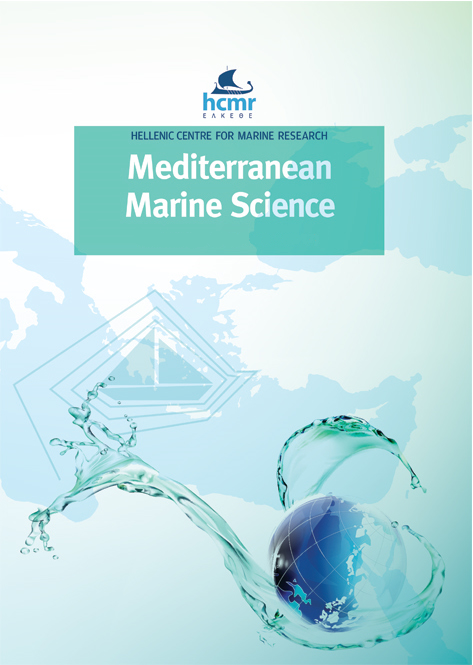Effects of ocean acidification on phenology and epiphytes of the seagrass Posidonia oceanica at two CO2 vent systems of Ischia (Italy)

Περίληψη
Morphological features of the seagrass Posidonia oceanica (L.) Delile and its epiphyte community were studied in three acidified stations located in two CO2 vents systems and one control station under normal pH conditions off the island of Ischia (Italy) to highlight the possible effects of ocean acidification. Plant phenology was analyzed every two months for a year cycle (June 2016–April 2017), while epiphytes were studied in the period of highest development of both the leaf canopy and the epiphytic community (June, August, and October 2016). The shoot density of Posidonia beds in the acidified stations of the studied sites was significantly higher than that in the control area. Significant differences in the mean leaf length according to the pH condition, month, and the interaction of these two factors were observed (PERMANOVA); the mean leaf width differed also among pH conditions and months. We recorded lower leaf lengths and widths in the acidified stations in all the considered months, compared to those in the control station. These differences are consistent with the higher impact of grazing by the herbivorous fish Sarpa salpa observed on the leaves in the acidified stations. However, the overall leaf surface available for epiphytes was similar among stations because of the higher shoot density under ocean acidification conditions. Overall, the composition and structure of the epiphytic community on the Posidonia leaves showed significant differences in relation to acidification: in both acidified sites, all the calcareous forms, both encrusting red algae (Corallinales) and animals (bryozoans, foraminiferans, and spirorbids), disappeared or were strongly reduced, in favor of encrusting or erect fleshy algae, and non-calcifying invertebrates (hydrozoans, tunicates) which dominated the assemblage. Coralline algae are early species in the epiphytic colonization of P. oceanica and therefore their absence can further modify the pattern of leaf colonization by other species. Therefore, the changes found in the epiphyte community in low pH areas could have potential cascading effects on the seagrass trophic network and the functioning of the system.
Λεπτομέρειες άρθρου
- Πώς να δημιουργήσετε Αναφορές
-
MECCA, S., CASOLI, E., ARDIZZONE, G., & GAMBI, M. C. (2020). Effects of ocean acidification on phenology and epiphytes of the seagrass Posidonia oceanica at two CO2 vent systems of Ischia (Italy). Mediterranean Marine Science, 21(1), 70–83. https://doi.org/10.12681/mms.20795
- Τεύχος
- Τόμ. 21 Αρ. 1 (2020)
- Ενότητα
- Research Article
Authors who publish with this journal agree to the following terms:
- Authors retain copyright and grant the journal right of first publication with the work simultaneously licensed under a Creative Commons Attribution Non-Commercial License that allows others to share the work with an acknowledgement of the work's authorship and initial publication in this journal.
- Authors are able to enter into separate, additional contractual arrangements for the non-exclusive distribution of the journal's published version of the work (e.g. post it to an institutional repository or publish it in a book), with an acknowledgement of its initial publication in this journal.
- Authors are permitted and encouraged to post their work online (preferably in institutional repositories or on their website) prior to and during the submission process, as it can lead to productive exchanges, as well as earlier and greater citation of published work (See The Effect of Open Access).





